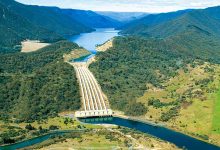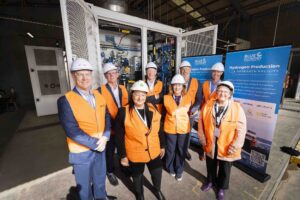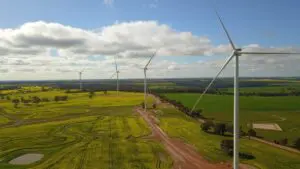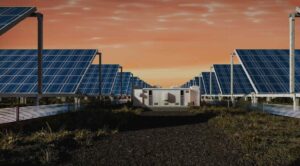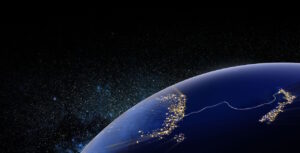The government-owned Snowy Hydro Corp has reported a sharply lower net profit for the 2019-20 year, after the government-owned corporation battled through a year impacted by bushfires and a collapse in global energy prices and Australian electricity prices.
But the utility – saddled with the costs of the controversial Snowy 2.0 pumped hydro scheme and a recent credit downgrade and warning from S&P, says it is still looking to invest in growing its portfolio of fast-start generators.
Snowy Hydro’s annual report shows that the corporation has joined a number of Australian energy companies forced to write down the fair value of some of their assets – in this case financial instruments – as falls in electricity demand and gas prices contributed to a drop in wholesale electricity prices.
It is set to see the corporation’s finances squeezed, as it seeks to invest in new gas generator capacity while completing the Snowy 2.0 project at the same as its revenues have taken a hit, which has already contributed to a credit rating downgrade.
Snowy Hydro operates a substantial portfolio of hydroelectricity generation capacity across the Snowy Hydro scheme, as well as a number of gas fired generators. Snowy Hydro also owns electricity retailers Red Energy and Lumo Energy, which serve most eastern Australian states.
The company reported gross revenues of $2.7 billion for the 2020 financial year, a $151 million fall from the year prior. Most of this fall was attributable to the company’s generation business, which reported a $103 million fall in revenue, representing an almost 20 per cent decrease from the year prior, due to the fall in electricity prices.
The company was also forced to write-down the value of financial instruments held by the company, with Snowy serving as a large provider of energy price hedging contracts, as the substantial drop in energy prices had effectively wiped out the value of some of the hedging contracts to Snowy Hydro.
Following the drop in revenue, and write-downs in the value of its hedging contracts, Snowy reported a statutory profit of $81.2 million, which was down considerably from the $332.2 million in statutory provide reported in the prior financial year. The company paid dividends of $217.8 million to the federal government, down from the $238.5 million in payments delivered in 2019.
“There has been a material movement in the fair value of financial instruments with $143.1 million after tax expense recorded, representing an unrealised loss driven by a general fall in energy curves. Whilst the COVID-19 economy is influencing the short-term market curves, the falls are broadly caused by record high renewable generation, lower gas and coal prices throughout the year,” the annual report says.
Snowy Hydro, now chaired by David Knox, the former head of gas company Santos and a former chair of Australia’s main oil and gas lobby APPEA, is considering an expansion of its gas generation portfolio, including new investments at its existing Victorian generators at Valley Power and Laverton North, as the company also considers its options to build a new gas generator at Kurri Kurri in New South Wales’ Hunter Valley.
Ratings agency S&P Global announced in September that it was downgrading Snowy Hydro’s long-term issuer credit rating, citing the company’s exposure to predicted declines in rainfalls in the Snowy region, as well as the ongoing impacts of lower electricity prices.
Combined with the substantial outlay required to cover the costs of the Snowy 2.0 expansion project, which S&P Global said is expected to fall between $5.7 billion and $6.2 billion, Snowy Hydro’s finances are expected to come under increased pressure as it balances increasing capital expenditure with lower revenues.
Snowy has already spent almost $1 billion on the Snowy 2.0 expansion, which is expected to deliver a 2,000MW of pumped hydro energy storage by linking to existing water storage reservoirs, but has faced criticism from environmental groups and energy analysis for its impacts on the Kosciusko national park and the growing price tag.
Analysts suggest that Snowy Hydro may not be in a viable position to invest in new gas generation infrastructure, as had been flagged by prime minister Scott Morrison as a response to the closure of the Liddell power station in New South Wales, without a further injection of funds by the federal government as the corporation’s sole shareholder.
In its annual report, Snowy Hydro said that ongoing uncertainty around national climate and energy policy, caused by the federal government which owns Snowy Hydro, was a significant risk to the company.
“Conflicting climate policies and goals and a relatively high level of uncertainty exist in regard to the future targeted emissions trajectory for the NEM. Snowy Hydro mitigates this risk with a well-diversified portfolio of assets which ensures that diverse policy outcomes can be effectively managed,” Snowy said in its annual report.
Snowy said that it also expected climate change to impact the availability of water for the Snowy Hydro scheme, with the prospect of future droughts likely to place added pressure on the scheme’s ability to generate electricity.
Snowy reported that it had also been forced to write off assets worth $5.4 million which had been damaged by bushfires over the last summer. Large parts of the Kosciusko national park burnt during the recent summer bushfires, and impacted Snowy Hydro’s staff facilities at Cabramurra.

